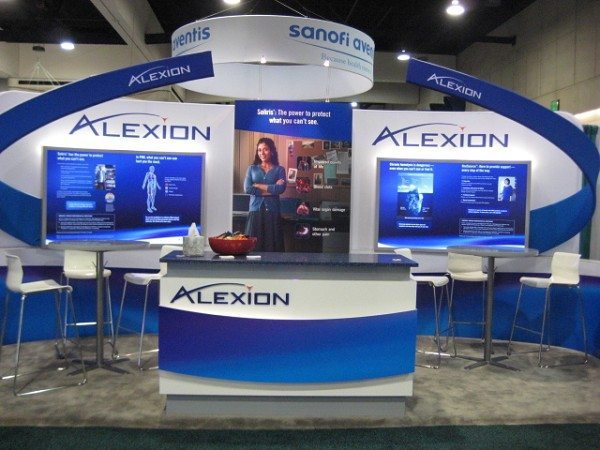Alexion Pharmaceuticals, Inc. (NASDAQ:ALXN) just gave us an update on its development pipeline, and a major part of the update addressed the ongoing development of its hepatitis C program. The company is developing its treatment as part of a partnership with Johnson & Johnson (NYSE:JNJ), and if successful, it has the potential to unseat some of the currently available blockbusters as SOC before the close of the decade. Here’s what we consider the highlight of the latest update – the pending phase IIa topline release, and the subsequent phase IIb initiation.
First, a look at the drug(s) in question. The trial is in two parts. One investigating the safety and pharmacokinetics of three drugs – AL-335, odalasvir (ACH-3102), and simeprevir (this latter drug is J&J’s already approved Olysio). The second investigating the safety and pharmacokinetics of just the Alexion candidates – AL-335 and odalasvir.
Simprevir is what’s called a virus protease inhibitor – it interrupts the protein synthesis stage of a viral lifecycle, which stops the virus in question from reaching maturation. If it doesn’t fully mature, it can’t shed, and in turn replicate. AL-355 works in a very similar way. It’s what’s called a polymerase inhibitor, and it stops the DNA polymerization phase of the HPV virus. This, again, stops replication, and spreading of the virus. Odalasvir is slightly different. It’s an NS5A inhibitor. The NS5A protein plays a key role in the viral lifecycle, but perhaps more importantly, it also contributes to interferon resistance, which is the most common factor behind HPV treatment failure. By combining an NS5A inhibitor with the other treatment types, the theory is that this element of the regimen will stop interferon resistance inhibiting efficacy.
So that’s the theory out of the way, what did Achillion let us know about the upcoming trials?
The announcement mentioned two important updates – as mentioned, the first relating to an ongoing phase IIa and the second concerning the initiation of a follow up phase IIb.
Phase IIa data is set for release during the third quarter of 2016, for both the three drug regimen part of the trial and the two drug part of the trial. In this data, we are looking for safety, and as a bonus, some indication of efficacy. The efficacy endpoint uses the standard HPV therapy baseline as a measurement point – viral shedding. We are looking for a reduction in viral shedding from baseline (the higher the reduction, the better). From a safety perspective, the usual conditions apply – low AE severity combined with a low side effect rate across the patient population.
As the data from the phase IIa hits, J&J (through its subsidiary, Janssen) is pitching to kick off the phase IIb. The trial will investigate the same two combinations of drugs, the doublet and the triplet regimen, but this time efficacy is promoted to a primary, rather than an investigational, endpoint. Population is also increasing, to a total of 400 patients enrolled.
We don’t yet have the specifics, but we can say with some certainty that the above mentioned viral shedding will play a key role in efficacy determination, and will likely be the bottom line to keep an eye out for when the two companies give us topline sometime in 2017. As a preliminary forecast, we expect topline during early Q2, 2017. The trial is testing across an eight-week regimen at the outside bracket, but it could take a few months to enroll the expected 400-strong population. As such, Q2 looks likely, but Q1 potentially.
What are the implications of positive data from the two trials (phase IIa and IIb) for both Janssen and Alexion?
Merck & Co., Inc. (NYSE:MRK) and Gilead Sciences, Inc.(NASDAQ:GILD) dominate the market as things stand, with the latter the more established, expected to generate $11 billion annually from its hep C portfolio (read: Harvoni) by 2020. If Alexion can hit markets with some efficacy data that competes with Harvoni, and is concurrently able to price its drug competitively (this shouldn’t be too difficult, Harvoni costs $94,000) then it could redirect a large portion of the total market towards its own balance sheet. Of course, the Janssen split will impact the bottom line, but that it’s a blockbuster potential is a certainty. That is, of course, assuming it works. Third quarter, 2016, followed by first or second quarter 2017 are the periods to watch.
